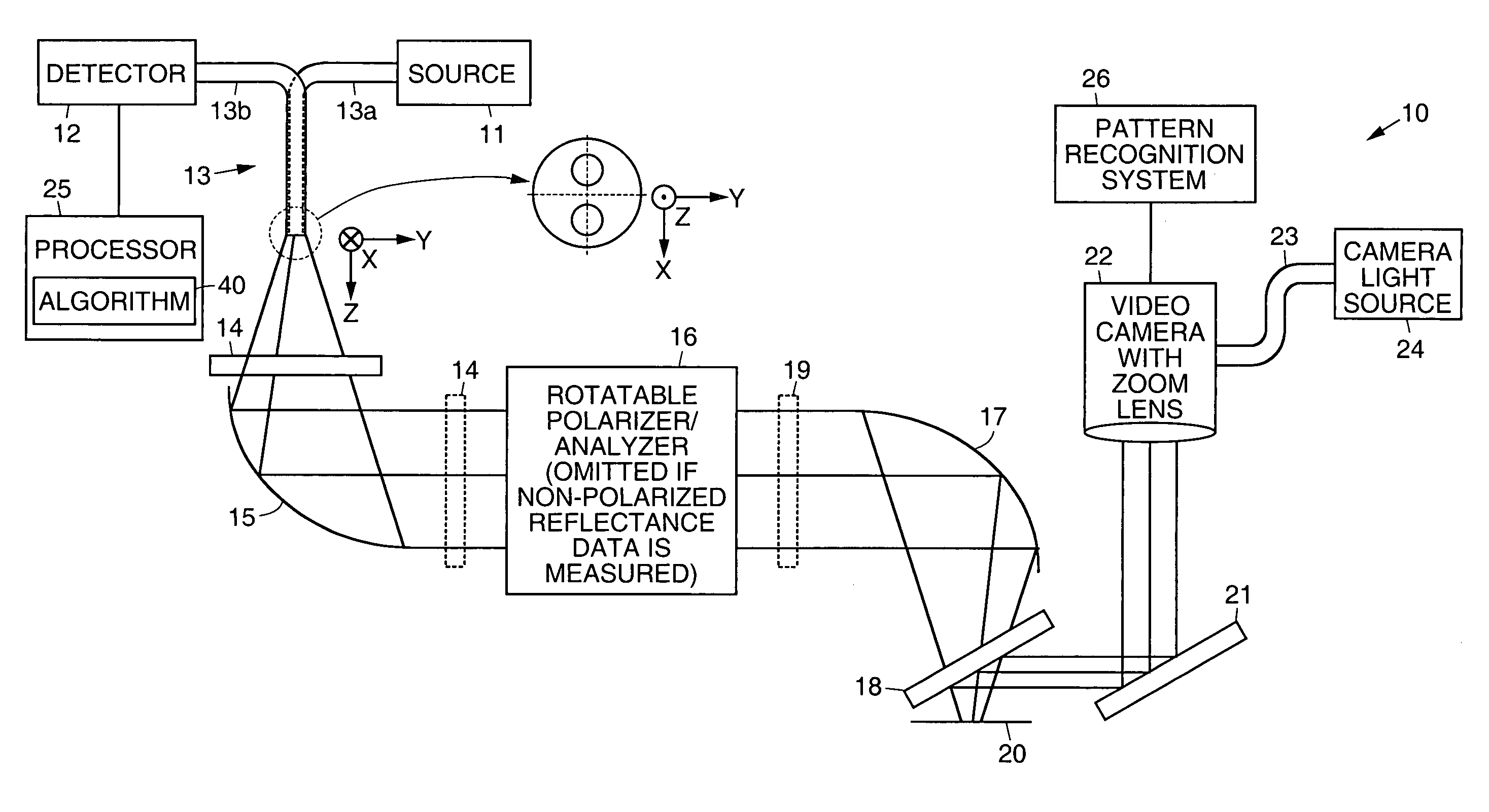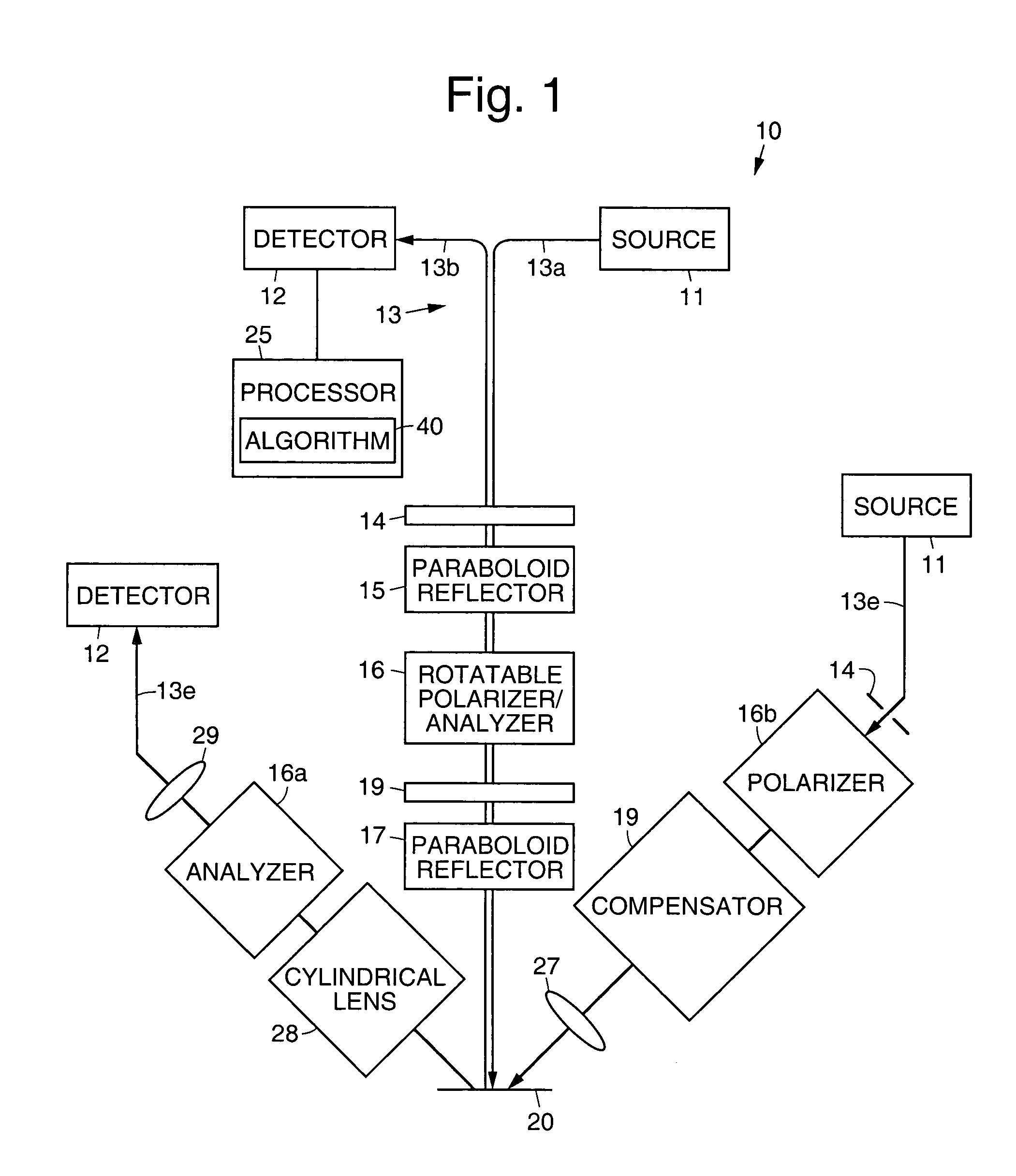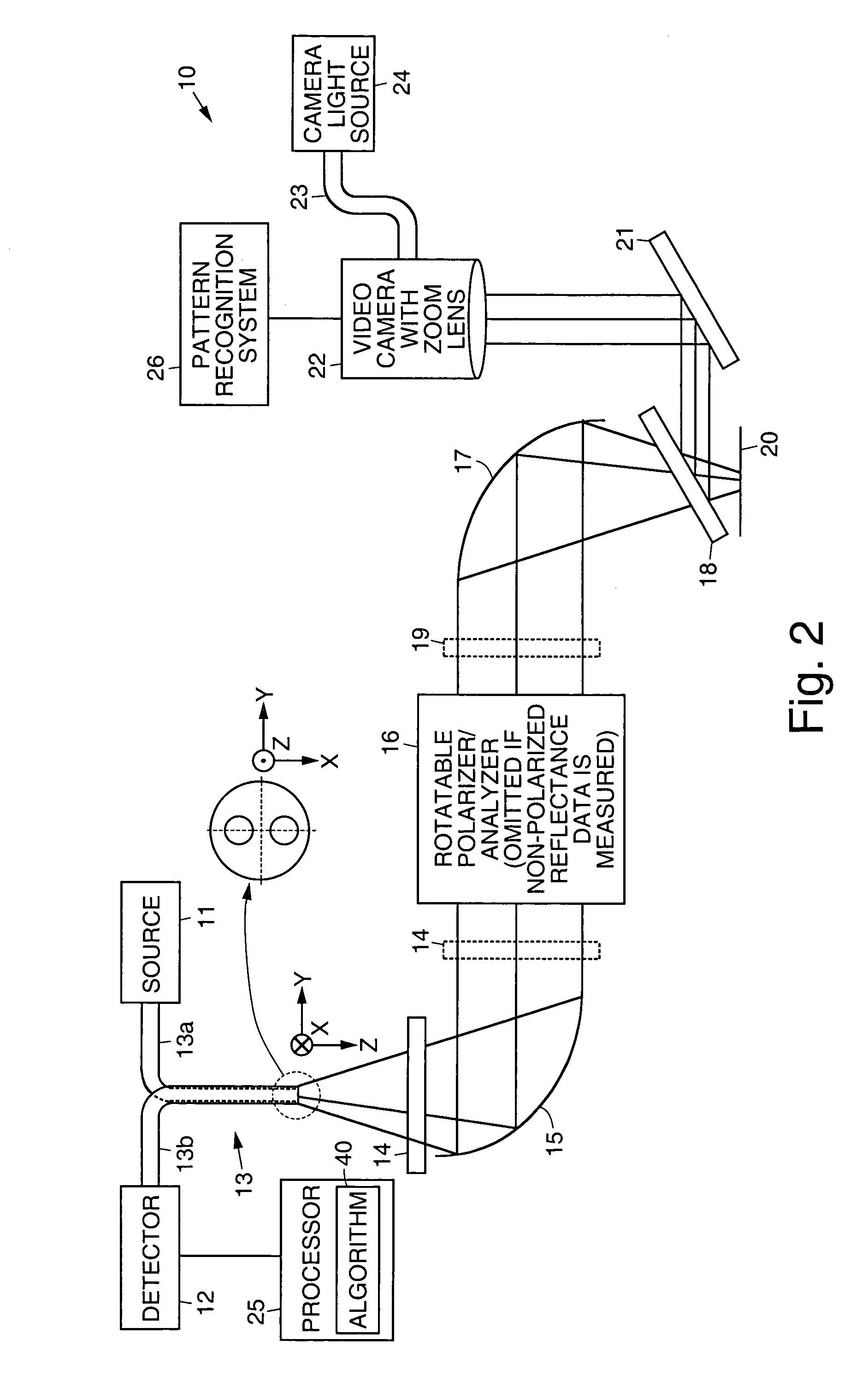Optical metrology systems and methods
a metrology and optical technology, applied in the field of optical metrology, can solve the problems of extreme difficulty in designing and producing antireflection coatings for the lens elements of the objective, limited usable practicable wavelength range, and inability to meet the requirements of measurement devices, etc., to achieve the effect of short measurement time, low reflected electromagnetic radiation level, and high efficiency
- Summary
- Abstract
- Description
- Claims
- Application Information
AI Technical Summary
Benefits of technology
Problems solved by technology
Method used
Image
Examples
example
[0124]To illustrate the significance of the present method 40 consider a simple example of a two-layer transparent (k=0) stack 30 shown in FIG. 11, where a layer 32 next to a silicon substrate 31 has a constant index of refraction (no dispersion) of n1=2 and thickness T1=2_m, and the top layer 33 has an index n2=1.5 and a thickness T2=1_m. A graph showing percent reflection versus wavelength for the stack 30 is shown in FIG. 12. If one performs a PSD (R); power spectral density analysis of the polarized reflection magnitude (FIG. 9) as a function of frequency, one finds that there are three PSD (R) peaks (shown in FIG. 13)
[0125]As is shown in FIG. 13, the first peak represents the top grating layer 33, the second peak represent the bottom layer 32 next to the substrate 31, while the third peak represent the total stack 30. There is no shift in the PSD peak position of the bottom layer 32 (Rξ of the second peak=1). To first order in (_ / λ), where _ is the grating period, one can defin...
PUM
 Login to View More
Login to View More Abstract
Description
Claims
Application Information
 Login to View More
Login to View More - R&D
- Intellectual Property
- Life Sciences
- Materials
- Tech Scout
- Unparalleled Data Quality
- Higher Quality Content
- 60% Fewer Hallucinations
Browse by: Latest US Patents, China's latest patents, Technical Efficacy Thesaurus, Application Domain, Technology Topic, Popular Technical Reports.
© 2025 PatSnap. All rights reserved.Legal|Privacy policy|Modern Slavery Act Transparency Statement|Sitemap|About US| Contact US: help@patsnap.com



